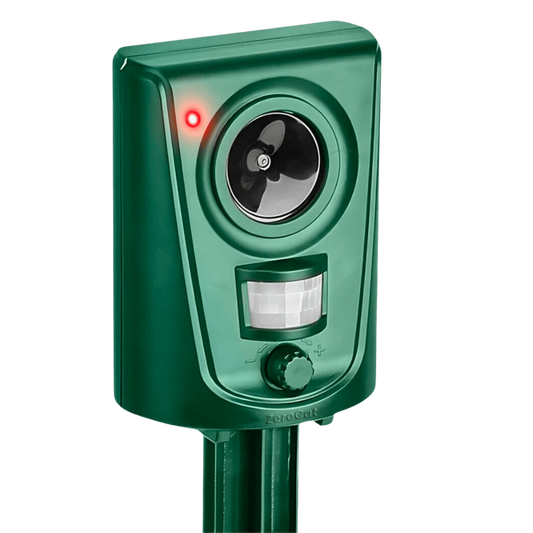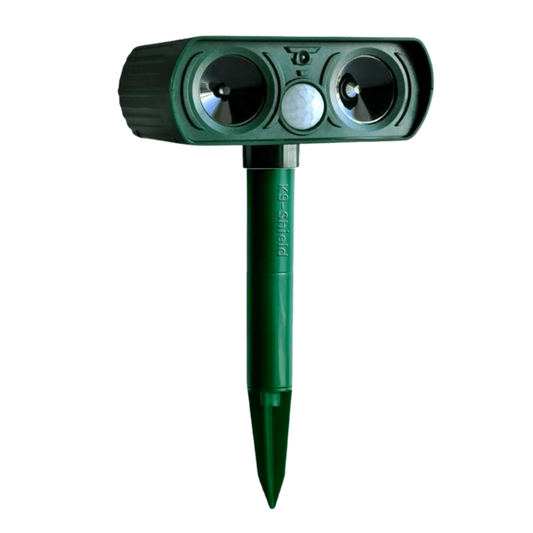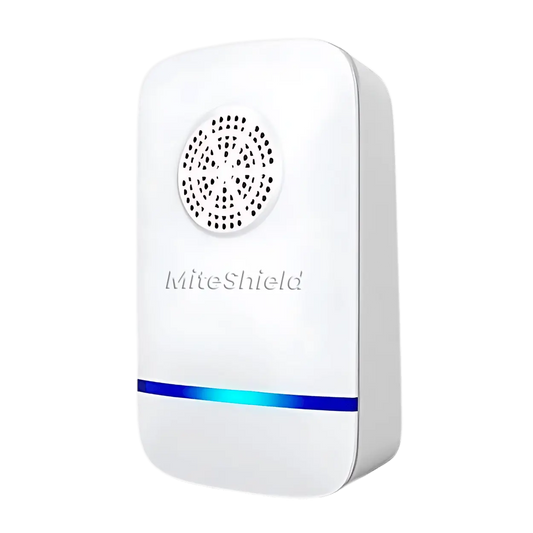If you’re dealing with dogs marking territory, digging in your garden, or just wandering where they shouldn’t, certain smells can work wonders to repel them. Some scents are simply unbearable to a dog’s powerful nose, and knowing which ones to use can save your lawn, doorstep, or flowerbed. In this article, you’ll discover the top 15 smells dogs hate most and how to use them effectively
.
1. Citrus

2. Vinegar

White vinegar has a powerful, pungent scent that dogs tend to avoid instinctively. Its acidity affects their sense of smell in a deeply unpleasant way, especially in enclosed or heavily marked areas. A simple solution of white vinegar and water sprayed on outdoor surfaces, patios, or fence lines can be enough to stop dogs from revisiting the spot. Bonus: it also neutralizes odors, which discourages repeat marking.
To make this method even more effective outdoors, vinegar can be combined with a motion-based solution like the JetSentinel. While the vinegar neutralizes odors and repels through scent, the JetSentinel adds a harmless burst of water triggered by movement. This double layer of deterrence makes it much harder for dogs to return, offering both immediate correction and long-term prevention.
3. Alcohol

Isopropyl alcohol or even the fumes from alcoholic beverages are off-putting to dogs. The sharp, sterile scent can trigger discomfort or stress. However, due to its chemical nature, it’s best reserved for hard surfaces only and should never be applied near food, pets, or porous materials. A cloth dabbed with rubbing alcohol and placed discreetly in areas dogs frequent can serve as a scent barrier, but use it carefully.
4. Spices

Many strong spices like chili powder, cayenne, paprika, or mustard powder naturally repel dogs. Their noses are highly sensitive to the sharp, biting particles in spicy substances. You can sprinkle these powders in dry areas like garden borders or around trash cans. Just be cautious, spicy deterrents should never be placed where dogs might ingest them or rub their faces, as they can cause irritation or discomfort.
5. Citronella

Well-known as a mosquito repellent, citronella is also a powerful dog deterrent. Its sharp, lemony scent overwhelms canine senses and creates a smell barrier dogs instinctively avoid. You’ll find citronella in sprays, candles, and oils, but for dog-repelling purposes, a diluted spray around outdoor furniture, entryways, or garden beds is most effective. Unlike other strong smells, citronella is non-toxic when used appropriately, though it should still be kept away from direct pet contact.
6. Mothballs

Mothballs release a chemical odor that’s highly unpleasant and even toxic to dogs. They’re often used in enclosed spaces like garages, basements, or storage areas to deter pests and curious animals alike. However, mothballs are not recommended for open or accessible spaces, as ingestion can be extremely dangerous for pets. If used at all, they should be securely contained and placed only in restricted areas where dogs have no access.
7. Garlic

Though it’s common in our kitchens, garlic has a lingering, sulfur-like scent that dogs can’t stand. The intensity becomes even more potent when garlic is crushed or cooked. While some people use garlic water sprays outdoors to repel dogs and other animals, it’s important to note that garlic is toxic if ingested in even moderate quantities. Any garlic-based solution should be used cautiously and only in areas dogs are unlikely to sniff too closely or lick.
8. Onion

Similar to garlic, onion has a pungent, eye-watering aroma that deters most dogs immediately. Whether raw or cooked, the aroma hangs in the air and clings to soil or surfaces for a long time. Onions, like garlic, are toxic when ingested by dogs, so if you use onion peels or sprays to deter them, make sure they’re placed in spaces where there’s no chance of chewing or swallowing. Onion water sprayed near fences or compost piles can help keep curious noses away.
9. Ammonia

Ammonia’s sharp, chemical odor is one of the most offensive smells to dogs. It mimics the scent of urine in high concentration, which can either confuse or alarm them, depending on their temperament. While it’s undeniably effective in repelling dogs, ammonia can be harmful if inhaled in large amounts or if it seeps into soil or water sources. If you choose to use it, soak a cloth in diluted ammonia and place it in a sealed container with holes, keeping it far out of reach from pets and children.
10. Coffee ground

Surprisingly, dogs don’t find the smell of used coffee grounds nearly as comforting as humans do. The rich, bitter aroma can be too intense for their sensitive noses. Used grounds can be sprinkled in garden beds or near planters to deter digging and marking. Plus, they double as a compostable soil enhancer. Just make sure not to use too much. Caffeine is toxic to dogs if ingested in large quantities, so avoid placing it in areas where curious pups might nibble.
However, while coffee grounds can help in the short term, their scent fades quickly outdoors, especially after rain or direct sun exposure. For a more reliable solution, many dog owners pair coffee grounds with longer-lasting deterrents. For instance, combining natural smells with a discreet, weather-resistant ultrasonic device like K9 Shield by Sonic Barrier (which is, incidentally, one of the best ultrasonic dog repellents on the market) can strengthen your efforts and keep dogs away—without chemicals or cleanup.
11. Mustard Oil

Mustard oil has a sharp, spicy aroma that dogs find overwhelming and irritating. A few drops on cotton balls or in water-diluted sprays can help keep dogs away from doorsteps, planters, or fences. This oil works both through its pungent smell and its slight tingling sensation on the nose if sniffed directly. Be sure to use it carefully and always test it in small areas to avoid staining surfaces or harming plants.
12. Mint

Mint may seem harmless, but dogs often react negatively to its strong menthol scent. Peppermint oil, in particular, is far too intense for most dogs, making it a useful natural deterrent. A diluted peppermint spray around entryways, furniture legs, or garden corners can help prevent dogs from chewing. Avoid applying concentrated mint oil directly on pet-accessible surfaces, as it can cause skin or nasal irritation in some cases.
13. Household Cleaners

Many common cleaning products, especially those with strong scents like bleach, pine, or ammonia-based formulas, are overwhelming for dogs. Their powerful chemical odor can make dogs avoid freshly cleaned floors, doorways, or trash bins. While this can be helpful short-term, it’s important to ventilate the area and never rely on harsh chemicals as a repellent strategy. Some ingredients, especially bleach and phenols, can be toxic if licked or absorbed through paws, so always rinse surfaces thoroughly and keep pets away while cleaning.
14. Tobacco

Dogs instinctively dislike the smell of tobacco, both raw and in smoke form. The strong, acrid odor clings to surfaces, which makes it unappealing to their heightened sense of smell. However, while it may act as a deterrent, tobacco is highly toxic to pets if ingested. It should never be used directly as a repellent. If you’re a smoker, you may notice dogs avoiding smoke-filled areas on their own, which can serve as a natural boundary.
15. Perfume

While perfume may smell pleasant to humans, its intense, synthetic fragrance is usually too much for dogs. Strong floral or musky notes, combined with alcohol bases, can irritate their noses and make them back away. That’s why dogs often resist cuddles right after you've sprayed a fragrance. If you want to use perfume as a deterrent, lightly spraying it on fabric near a no-go area (like a couch or shoe rack) can work, but avoid spraying directly on anything your dog might lick or lay on.
16. Essential oils

Essential oils such as eucalyptus, tea tree, lemongrass, cinnamon, and clove are all highly unpleasant to dogs and some are downright harmful if used incorrectly. Their potent scent can deter dogs from chewing furniture or entering specific zones. However, due to their strength and toxicity when undiluted, essential oils should always be used with caution. Mix only a few drops with water in a spray bottle and never apply directly to your pet. Use essential oil repellents on cloth barriers, corners, or furniture legs where dogs aren’t in direct contact.
17. Eucalyptus

Eucalyptus has a crisp, camphor-like scent that dogs find overpowering and irritating. It’s one of the most commonly used essential oils in dog repellent sprays for this reason. A few drops of eucalyptus oil mixed with water can be sprayed around furniture, plants, or garden borders. However, it’s crucial to keep it out of reach. Eucalyptus can be toxic if ingested or applied to the skin, especially in its pure form. Use only in well-ventilated areas and never directly on your pet.
18. Acetone

The chemical smell of acetone, commonly found in nail polish remover, is extremely off-putting to dogs. It creates a sharp, stinging sensation in their noses that makes them quickly back off. That said, acetone is not a safe repellent method. It evaporates quickly and is flammable, and the risk of skin or respiratory irritation (for pets and humans) makes it unsuitable for regular use. If you notice your dog avoiding freshly manicured nails or polish spills, that reaction alone shows how effective this smell is.
19. Lavender

Lavender is calming for humans, but for dogs, it can be divisive. Some find it too strong and will avoid it, while others may tolerate it in small doses. It’s commonly used in natural calming sprays for pets, but when concentrated or paired with other strong essential oils, it becomes a deterrent. If you want to test lavender as a gentle repellent, try placing dried lavender sachets near problem areas like bedding or furniture corners. It’s safer than using oil and offers a longer-lasting, subtle effect.
20. Herbs

Some pungent herbs work surprisingly well to repel dogs naturally. Rosemary has a sharp scent that can deter digging, while rue and the curry plant (Helichrysum italicum) give off intense fragrances dogs instinctively avoid. These plants are safe to grow in your garden and serve a dual purpose: beautifying your space while keeping curious dogs away. Simply plant them around borders or crush a few leaves and scatter them near no-go zones. It’s an easy, natural solution that blends perfectly into your environment.
FAQ
What smells are most effective at repelling dogs?
The most effective dog-repelling smells are typically strong, sharp, and unpleasant to a dog’s highly sensitive nose. Among the top options are citrus (like lemon or orange), vinegar, mustard oil, citronella, and ammonia. These smells overwhelm their olfactory system and create discomfort, causing dogs to avoid the area. However, effectiveness can vary depending on the dog’s breed, age, and personality. It’s important to test a scent in a small space before applying it widely. You should also consider the setting. For example, essential oils like eucalyptus or peppermint may work better indoors, while vinegar or citrus peels are great outdoors.
What smell do dogs hate enough to avoid pooping in unwanted places?
To stop dogs from pooping in certain areas, strong and persistent scents like vinegar, ammonia, or cayenne pepper are among the most effective. These odors disrupt a dog’s routine marking behavior and create an environment that feels unfamiliar or uncomfortable. A vinegar-water spray on fence lines or favorite poop spots can discourage repeat offenses, while cayenne powder lightly dusted in problem areas adds a physical and olfactory deterrent. Always avoid using anything that could harm the dog if ingested or inhaled. Spicy or chemical deterrents must be used carefully to ensure they only repel, not cause harm.
What smell repels dogs from urinating in certain areas?
Dogs often urinate in places where they or others have marked before. To break this cycle, smells that neutralize existing odors and introduce an unpleasant new scent are most effective. White vinegar works well because it removes the scent of urine while also repelling dogs with its sharp smell. Citrus sprays, mustard oil, and alcohol-based cleaners can also discourage marking. For long-term results, it’s important to thoroughly clean the area before applying a repellent, as dogs have a powerful memory linked to scent. If the spot still smells like urine to them, they’ll likely keep coming back despite your efforts.
What smells can you use indoors to keep dogs away?
Peppermint, lavender, and citronella essential oils (in diluted form) are popular choices for keeping dogs away from furniture, trash bins, or off-limit rooms. A few drops mixed with water in a spray bottle can be applied to doorframes, rugs, or baseboards. Citrus peels, coffee grounds, or sachets of rosemary can also be placed discreetly in corners or near items you want to protect. Always test any scent on a small surface first to avoid staining or overwhelming your space. Avoid strong chemicals like ammonia indoors, as they can irritate both pets and humans.
What are the best smells to use to repel dogs from your garden and yard?
For outdoor spaces, you want smells that are natural, weather-resistant, and safe for your soil and plants. Citrus peels, vinegar spray, mustard oil, coffee grounds, and certain herbs like rosemary or rue are ideal. You can sprinkle used coffee grounds or citrus peels around flower beds or mix vinegar with water to spray along fence lines. Citronella plants or eucalyptus bushes can also act as living barriers. Choose solutions that match your local climate and watering schedule. For example, powdered spices like cayenne won’t last long in the rain, but they work well in dry zones or potted plants.
Beyond smells, what other methods work well to deter dogs?
While scent-based repellents are useful, combining them with other methods increases their long-term effectiveness. For instance, certain sounds can help scare dogs away, such as sudden noises, sharp alarms, or repeated hand claps, which can trigger a flight response when used at the right moment.
Physical barriers like fences, wire mesh, or spiky surfaces are also highly effective against digging or intrusion. Motion-activated sprinklers and ultrasonic repellents are commonly used outdoors—they respond to movement and emit an unpleasant yet harmless stimulus. According to this review of ultrasonic dog repellents, they can be effective in certain situations, especially when well-positioned and used alongside other deterrents.
Indoors, repellent mats, double-sided adhesive strips, or proper training may be enough. The best approach is often a combination of these methods.









